-
EXECUTIVE SUMMARY
-
1.1.
-
Market Overview
-
Key Findings
-
Market Segmentation
-
1.4.
-
Competitive Landscape
-
Challenges and Opportunities
-
Future
-
Outlook
-
\r\n
-
MARKET INTRODUCTION
-
Definition
- Research Objective
- Assumption
-
2.2.
-
Scope of the study
-
2.2.3.
-
Limitations
-
RESEARCH METHODOLOGY
-
Overview
-
Data Mining
-
Secondary Research
-
Primary Research
- Primary Interviews
- Breakdown of Primary Respondents
-
and Information Gathering Process
-
Forecasting Model
-
Market Size Estimation
- Bottom-Up
- Top-Down Approach
-
Approach
-
Data Triangulation
-
3.8.
-
Validation
-
\r\n
-
MARKET DYNAMICS
-
Overview
-
4.2.
-
Drivers
-
Restraints
-
Opportunities
-
MARKET FACTOR ANALYSIS
-
Value chain Analysis
-
Porter's Five Forces Analysis
- Bargaining Power of Buyers
- Threat of Substitutes
- Intensity
-
5.2.1.
-
Bargaining Power of Suppliers
-
5.2.3.
-
Threat of New Entrants
-
of Rivalry
-
COVID-19 Impact Analysis
- Market Impact Analysis
- Regional Impact
- Opportunity and Threat Analysis
-
\r\n
-
VINYL ACETATE MONOMER MARKET, BY APPLICATION (USD BILLION)
-
6.1.
-
Adhesives
-
Coatings
-
Textiles
-
Films
-
Paper
-
VINYL ACETATE MONOMER MARKET, BY END USE INDUSTRY (USD BILLION)
-
7.1.
-
Construction
-
Automotive
-
Packaging
-
Personal Care
-
Consumer Goods
-
VINYL ACETATE MONOMER MARKET, BY FORMULATION
-
TYPE (USD BILLION)
-
Aqueous Formulations
-
Solvent-Based Formulations
-
Powder Coatings
-
Emulsions
-
VINYL ACETATE MONOMER MARKET,
-
BY DISTRIBUTION CHANNEL (USD BILLION)
-
Direct Sales
-
Distributors
-
Online Sales
-
VINYL ACETATE MONOMER MARKET, BY REGIONAL (USD
-
BILLION)
-
North America
- US
- Canada
- Germany
- UK
- France
- Italy
- Spain
- Rest of Europe
-
10.2.
-
Europe
-
10.2.4.
-
Russia
-
APAC
- China
- India
- Japan
- Malaysia
- Thailand
- Indonesia
- Rest of APAC
-
10.3.4.
-
South Korea
-
South America
- Brazil
- Argentina
- Rest of South America
-
10.4.2.
-
Mexico
-
MEA
- GCC Countries
- South Africa
- Rest of MEA
-
\r\n
-
COMPETITIVE LANDSCAPE
-
Overview
-
Competitive Analysis
-
Market share Analysis
-
Major Growth Strategy in the Vinyl
-
Acetate Monomer Market
-
Competitive Benchmarking
-
Leading
-
Players in Terms of Number of Developments in the Vinyl Acetate Monomer Market
-
Key developments and growth strategies
- New Product Launch/Service
- Merger & Acquisitions
- Joint Ventures
-
Deployment
-
Major Players Financial Matrix
- Sales and Operating Income
- Major Players R&D Expenditure. 2023
-
COMPANY PROFILES
-
Huntsman
- Financial Overview
- Products Offered
- Key Developments
- SWOT Analysis
- Key Strategies
-
LyondellBasell
- Financial Overview
- Products
- Key Developments
- SWOT Analysis
-
Offered
-
12.2.5.
-
Key Strategies
-
SABIC
- Financial Overview
- Key Developments
- SWOT Analysis
- Key Strategies
-
12.3.2.
-
Products Offered
-
Wacker Chemie
- Financial Overview
- Products Offered
- Key Developments
- SWOT
- Key Strategies
-
Analysis
-
Formosa Plastics
- Products Offered
- Key Developments
- SWOT Analysis
- Key Strategies
-
12.5.1.
-
Financial Overview
-
Union Carbide
- Financial Overview
- Products Offered
- Key
- SWOT Analysis
- Key Strategies
- Financial Overview
- Products Offered
- SWOT Analysis
- Key Strategies
- Financial Overview
- Products Offered
- SWOT Analysis
- Key Strategies
- Financial Overview
- Products Offered
- SWOT Analysis
- Key Strategies
- Financial Overview
- Products
- Key Developments
- SWOT Analysis
-
Developments
-
12.7.
-
Ineos
-
12.7.3.
-
Key Developments
-
12.8.
-
BASF
-
12.8.3.
-
Key Developments
-
12.9.
-
Oxea
-
12.9.3.
-
Key Developments
-
12.10.
-
Mitsubishi Gas Chemical
-
Offered
-
12.10.5.
-
Key Strategies
-
Kuraray
- Financial Overview
- Key Developments
- SWOT Analysis
- Key Strategies
-
12.11.2.
-
Products Offered
-
Shanghai Huayi
- Financial Overview
- Products Offered
- Key Developments
- SWOT
- Key Strategies
-
Analysis
-
Dow
- Financial
- Products Offered
- Key Developments
- Key Strategies
-
Overview
-
12.13.4.
-
SWOT Analysis
-
Celanese
- Products Offered
- Key Developments
- SWOT Analysis
- Key Strategies
-
12.14.1.
-
Financial Overview
-
Eastman
- Financial Overview
- Products Offered
- SWOT Analysis
- Key Strategies
-
Chemical
-
12.15.3.
-
Key Developments
-
APPENDIX
-
References
-
Related Reports
-
LIST OF
-
TABLES
-
\r\nTABLE 1. LIST OF ASSUMPTIONS
-
NORTH AMERICA VINYL
-
ACETATE MONOMER MARKET SIZE ESTIMATES & FORECAST, BY APPLICATION, 2019-2035
-
(USD BILLIONS)
-
NORTH AMERICA VINYL ACETATE MONOMER MARKET SIZE ESTIMATES
-
& FORECAST, BY END USE INDUSTRY, 2019-2035 (USD BILLIONS)
-
NORTH
-
AMERICA VINYL ACETATE MONOMER MARKET SIZE ESTIMATES & FORECAST, BY FORMULATION
-
TYPE, 2019-2035 (USD BILLIONS)
-
NORTH AMERICA VINYL ACETATE MONOMER
-
MARKET SIZE ESTIMATES & FORECAST, BY DISTRIBUTION CHANNEL, 2019-2035 (USD BILLIONS)
-
NORTH AMERICA VINYL ACETATE MONOMER MARKET SIZE ESTIMATES & FORECAST,
-
BY REGIONAL, 2019-2035 (USD BILLIONS)
-
US VINYL ACETATE MONOMER MARKET
-
SIZE ESTIMATES & FORECAST, BY APPLICATION, 2019-2035 (USD BILLIONS)
-
TABLE
-
US VINYL ACETATE MONOMER MARKET SIZE ESTIMATES & FORECAST, BY END USE INDUSTRY,
-
US VINYL ACETATE MONOMER MARKET SIZE ESTIMATES
-
& FORECAST, BY FORMULATION TYPE, 2019-2035 (USD BILLIONS)
-
US
-
VINYL ACETATE MONOMER MARKET SIZE ESTIMATES & FORECAST, BY DISTRIBUTION CHANNEL,
-
US VINYL ACETATE MONOMER MARKET SIZE ESTIMATES
-
& FORECAST, BY REGIONAL, 2019-2035 (USD BILLIONS)
-
CANADA VINYL
-
ACETATE MONOMER MARKET SIZE ESTIMATES & FORECAST, BY APPLICATION, 2019-2035
-
(USD BILLIONS)
-
CANADA VINYL ACETATE MONOMER MARKET SIZE ESTIMATES
-
& FORECAST, BY END USE INDUSTRY, 2019-2035 (USD BILLIONS)
-
CANADA
-
VINYL ACETATE MONOMER MARKET SIZE ESTIMATES & FORECAST, BY FORMULATION TYPE,
-
CANADA VINYL ACETATE MONOMER MARKET SIZE
-
ESTIMATES & FORECAST, BY DISTRIBUTION CHANNEL, 2019-2035 (USD BILLIONS)
-
CANADA VINYL ACETATE MONOMER MARKET SIZE ESTIMATES & FORECAST, BY
-
REGIONAL, 2019-2035 (USD BILLIONS)
-
EUROPE VINYL ACETATE MONOMER
-
MARKET SIZE ESTIMATES & FORECAST, BY APPLICATION, 2019-2035 (USD BILLIONS)
-
EUROPE VINYL ACETATE MONOMER MARKET SIZE ESTIMATES & FORECAST, BY
-
END USE INDUSTRY, 2019-2035 (USD BILLIONS)
-
EUROPE VINYL ACETATE
-
MONOMER MARKET SIZE ESTIMATES & FORECAST, BY FORMULATION TYPE, 2019-2035 (USD
-
BILLIONS)
-
EUROPE VINYL ACETATE MONOMER MARKET SIZE ESTIMATES &
-
FORECAST, BY DISTRIBUTION CHANNEL, 2019-2035 (USD BILLIONS)
-
EUROPE
-
VINYL ACETATE MONOMER MARKET SIZE ESTIMATES & FORECAST, BY REGIONAL, 2019-2035
-
(USD BILLIONS)
-
GERMANY VINYL ACETATE MONOMER MARKET SIZE ESTIMATES
-
& FORECAST, BY APPLICATION, 2019-2035 (USD BILLIONS)
-
GERMANY
-
VINYL ACETATE MONOMER MARKET SIZE ESTIMATES & FORECAST, BY END USE INDUSTRY,
-
GERMANY VINYL ACETATE MONOMER MARKET SIZE
-
ESTIMATES & FORECAST, BY FORMULATION TYPE, 2019-2035 (USD BILLIONS)
-
TABLE
-
GERMANY VINYL ACETATE MONOMER MARKET SIZE ESTIMATES & FORECAST, BY DISTRIBUTION
-
CHANNEL, 2019-2035 (USD BILLIONS)
-
GERMANY VINYL ACETATE MONOMER
-
MARKET SIZE ESTIMATES & FORECAST, BY REGIONAL, 2019-2035 (USD BILLIONS)
-
UK VINYL ACETATE MONOMER MARKET SIZE ESTIMATES & FORECAST, BY APPLICATION,
-
UK VINYL ACETATE MONOMER MARKET SIZE ESTIMATES
-
& FORECAST, BY END USE INDUSTRY, 2019-2035 (USD BILLIONS)
-
UK
-
VINYL ACETATE MONOMER MARKET SIZE ESTIMATES & FORECAST, BY FORMULATION TYPE,
-
UK VINYL ACETATE MONOMER MARKET SIZE ESTIMATES
-
& FORECAST, BY DISTRIBUTION CHANNEL, 2019-2035 (USD BILLIONS)
-
TABLE 31.
-
UK VINYL ACETATE MONOMER MARKET SIZE ESTIMATES & FORECAST, BY REGIONAL, 2019-2035
-
(USD BILLIONS)
-
FRANCE VINYL ACETATE MONOMER MARKET SIZE ESTIMATES
-
& FORECAST, BY APPLICATION, 2019-2035 (USD BILLIONS)
-
FRANCE
-
VINYL ACETATE MONOMER MARKET SIZE ESTIMATES & FORECAST, BY END USE INDUSTRY,
-
FRANCE VINYL ACETATE MONOMER MARKET SIZE
-
ESTIMATES & FORECAST, BY FORMULATION TYPE, 2019-2035 (USD BILLIONS)
-
TABLE
-
FRANCE VINYL ACETATE MONOMER MARKET SIZE ESTIMATES & FORECAST, BY DISTRIBUTION
-
CHANNEL, 2019-2035 (USD BILLIONS)
-
FRANCE VINYL ACETATE MONOMER MARKET
-
SIZE ESTIMATES & FORECAST, BY REGIONAL, 2019-2035 (USD BILLIONS)
-
TABLE
-
RUSSIA VINYL ACETATE MONOMER MARKET SIZE ESTIMATES & FORECAST, BY APPLICATION,
-
RUSSIA VINYL ACETATE MONOMER MARKET SIZE
-
ESTIMATES & FORECAST, BY END USE INDUSTRY, 2019-2035 (USD BILLIONS)
-
TABLE
-
RUSSIA VINYL ACETATE MONOMER MARKET SIZE ESTIMATES & FORECAST, BY FORMULATION
-
TYPE, 2019-2035 (USD BILLIONS)
-
RUSSIA VINYL ACETATE MONOMER MARKET
-
SIZE ESTIMATES & FORECAST, BY DISTRIBUTION CHANNEL, 2019-2035 (USD BILLIONS)
-
RUSSIA VINYL ACETATE MONOMER MARKET SIZE ESTIMATES & FORECAST,
-
BY REGIONAL, 2019-2035 (USD BILLIONS)
-
ITALY VINYL ACETATE MONOMER
-
MARKET SIZE ESTIMATES & FORECAST, BY APPLICATION, 2019-2035 (USD BILLIONS)
-
ITALY VINYL ACETATE MONOMER MARKET SIZE ESTIMATES & FORECAST, BY
-
END USE INDUSTRY, 2019-2035 (USD BILLIONS)
-
ITALY VINYL ACETATE MONOMER
-
MARKET SIZE ESTIMATES & FORECAST, BY FORMULATION TYPE, 2019-2035 (USD BILLIONS)
-
ITALY VINYL ACETATE MONOMER MARKET SIZE ESTIMATES & FORECAST,
-
BY DISTRIBUTION CHANNEL, 2019-2035 (USD BILLIONS)
-
ITALY VINYL ACETATE
-
MONOMER MARKET SIZE ESTIMATES & FORECAST, BY REGIONAL, 2019-2035 (USD BILLIONS)
-
SPAIN VINYL ACETATE MONOMER MARKET SIZE ESTIMATES & FORECAST,
-
BY APPLICATION, 2019-2035 (USD BILLIONS)
-
SPAIN VINYL ACETATE MONOMER
-
MARKET SIZE ESTIMATES & FORECAST, BY END USE INDUSTRY, 2019-2035 (USD BILLIONS)
-
SPAIN VINYL ACETATE MONOMER MARKET SIZE ESTIMATES & FORECAST,
-
BY FORMULATION TYPE, 2019-2035 (USD BILLIONS)
-
SPAIN VINYL ACETATE
-
MONOMER MARKET SIZE ESTIMATES & FORECAST, BY DISTRIBUTION CHANNEL, 2019-2035
-
(USD BILLIONS)
-
SPAIN VINYL ACETATE MONOMER MARKET SIZE ESTIMATES
-
& FORECAST, BY REGIONAL, 2019-2035 (USD BILLIONS)
-
REST OF EUROPE
-
VINYL ACETATE MONOMER MARKET SIZE ESTIMATES & FORECAST, BY APPLICATION, 2019-2035
-
(USD BILLIONS)
-
REST OF EUROPE VINYL ACETATE MONOMER MARKET SIZE
-
ESTIMATES & FORECAST, BY END USE INDUSTRY, 2019-2035 (USD BILLIONS)
-
TABLE
-
REST OF EUROPE VINYL ACETATE MONOMER MARKET SIZE ESTIMATES & FORECAST, BY
-
FORMULATION TYPE, 2019-2035 (USD BILLIONS)
-
REST OF EUROPE VINYL
-
ACETATE MONOMER MARKET SIZE ESTIMATES & FORECAST, BY DISTRIBUTION CHANNEL, 2019-2035
-
(USD BILLIONS)
-
REST OF EUROPE VINYL ACETATE MONOMER MARKET SIZE
-
ESTIMATES & FORECAST, BY REGIONAL, 2019-2035 (USD BILLIONS)
-
TABLE 57.
-
APAC VINYL ACETATE MONOMER MARKET SIZE ESTIMATES & FORECAST, BY APPLICATION,
-
APAC VINYL ACETATE MONOMER MARKET SIZE
-
ESTIMATES & FORECAST, BY END USE INDUSTRY, 2019-2035 (USD BILLIONS)
-
TABLE
-
APAC VINYL ACETATE MONOMER MARKET SIZE ESTIMATES & FORECAST, BY FORMULATION
-
TYPE, 2019-2035 (USD BILLIONS)
-
APAC VINYL ACETATE MONOMER MARKET
-
SIZE ESTIMATES & FORECAST, BY DISTRIBUTION CHANNEL, 2019-2035 (USD BILLIONS)
-
APAC VINYL ACETATE MONOMER MARKET SIZE ESTIMATES & FORECAST,
-
BY REGIONAL, 2019-2035 (USD BILLIONS)
-
CHINA VINYL ACETATE MONOMER
-
MARKET SIZE ESTIMATES & FORECAST, BY APPLICATION, 2019-2035 (USD BILLIONS)
-
CHINA VINYL ACETATE MONOMER MARKET SIZE ESTIMATES & FORECAST, BY
-
END USE INDUSTRY, 2019-2035 (USD BILLIONS)
-
CHINA VINYL ACETATE MONOMER
-
MARKET SIZE ESTIMATES & FORECAST, BY FORMULATION TYPE, 2019-2035 (USD BILLIONS)
-
CHINA VINYL ACETATE MONOMER MARKET SIZE ESTIMATES & FORECAST,
-
BY DISTRIBUTION CHANNEL, 2019-2035 (USD BILLIONS)
-
CHINA VINYL ACETATE
-
MONOMER MARKET SIZE ESTIMATES & FORECAST, BY REGIONAL, 2019-2035 (USD BILLIONS)
-
INDIA VINYL ACETATE MONOMER MARKET SIZE ESTIMATES & FORECAST,
-
BY APPLICATION, 2019-2035 (USD BILLIONS)
-
INDIA VINYL ACETATE MONOMER
-
MARKET SIZE ESTIMATES & FORECAST, BY END USE INDUSTRY, 2019-2035 (USD BILLIONS)
-
INDIA VINYL ACETATE MONOMER MARKET SIZE ESTIMATES & FORECAST,
-
BY FORMULATION TYPE, 2019-2035 (USD BILLIONS)
-
INDIA VINYL ACETATE
-
MONOMER MARKET SIZE ESTIMATES & FORECAST, BY DISTRIBUTION CHANNEL, 2019-2035
-
(USD BILLIONS)
-
INDIA VINYL ACETATE MONOMER MARKET SIZE ESTIMATES
-
& FORECAST, BY REGIONAL, 2019-2035 (USD BILLIONS)
-
JAPAN VINYL
-
ACETATE MONOMER MARKET SIZE ESTIMATES & FORECAST, BY APPLICATION, 2019-2035
-
(USD BILLIONS)
-
JAPAN VINYL ACETATE MONOMER MARKET SIZE ESTIMATES
-
& FORECAST, BY END USE INDUSTRY, 2019-2035 (USD BILLIONS)
-
JAPAN
-
VINYL ACETATE MONOMER MARKET SIZE ESTIMATES & FORECAST, BY FORMULATION TYPE,
-
JAPAN VINYL ACETATE MONOMER MARKET SIZE
-
ESTIMATES & FORECAST, BY DISTRIBUTION CHANNEL, 2019-2035 (USD BILLIONS)
-
JAPAN VINYL ACETATE MONOMER MARKET SIZE ESTIMATES & FORECAST, BY
-
REGIONAL, 2019-2035 (USD BILLIONS)
-
SOUTH KOREA VINYL ACETATE MONOMER
-
MARKET SIZE ESTIMATES & FORECAST, BY APPLICATION, 2019-2035 (USD BILLIONS)
-
SOUTH KOREA VINYL ACETATE MONOMER MARKET SIZE ESTIMATES & FORECAST,
-
BY END USE INDUSTRY, 2019-2035 (USD BILLIONS)
-
SOUTH KOREA VINYL
-
ACETATE MONOMER MARKET SIZE ESTIMATES & FORECAST, BY FORMULATION TYPE, 2019-2035
-
(USD BILLIONS)
-
SOUTH KOREA VINYL ACETATE MONOMER MARKET SIZE ESTIMATES
-
& FORECAST, BY DISTRIBUTION CHANNEL, 2019-2035 (USD BILLIONS)
-
TABLE 81.
-
SOUTH KOREA VINYL ACETATE MONOMER MARKET SIZE ESTIMATES & FORECAST, BY REGIONAL,
-
MALAYSIA VINYL ACETATE MONOMER MARKET SIZE
-
ESTIMATES & FORECAST, BY APPLICATION, 2019-2035 (USD BILLIONS)
-
TABLE 83.
-
MALAYSIA VINYL ACETATE MONOMER MARKET SIZE ESTIMATES & FORECAST, BY END USE
-
INDUSTRY, 2019-2035 (USD BILLIONS)
-
MALAYSIA VINYL ACETATE MONOMER
-
MARKET SIZE ESTIMATES & FORECAST, BY FORMULATION TYPE, 2019-2035 (USD BILLIONS)
-
MALAYSIA VINYL ACETATE MONOMER MARKET SIZE ESTIMATES & FORECAST,
-
BY DISTRIBUTION CHANNEL, 2019-2035 (USD BILLIONS)
-
MALAYSIA VINYL
-
ACETATE MONOMER MARKET SIZE ESTIMATES & FORECAST, BY REGIONAL, 2019-2035 (USD
-
BILLIONS)
-
THAILAND VINYL ACETATE MONOMER MARKET SIZE ESTIMATES &
-
FORECAST, BY APPLICATION, 2019-2035 (USD BILLIONS)
-
THAILAND VINYL
-
ACETATE MONOMER MARKET SIZE ESTIMATES & FORECAST, BY END USE INDUSTRY, 2019-2035
-
(USD BILLIONS)
-
THAILAND VINYL ACETATE MONOMER MARKET SIZE ESTIMATES
-
& FORECAST, BY FORMULATION TYPE, 2019-2035 (USD BILLIONS)
-
THAILAND
-
VINYL ACETATE MONOMER MARKET SIZE ESTIMATES & FORECAST, BY DISTRIBUTION CHANNEL,
-
THAILAND VINYL ACETATE MONOMER MARKET SIZE
-
ESTIMATES & FORECAST, BY REGIONAL, 2019-2035 (USD BILLIONS)
-
TABLE 92.
-
INDONESIA VINYL ACETATE MONOMER MARKET SIZE ESTIMATES & FORECAST, BY APPLICATION,
-
INDONESIA VINYL ACETATE MONOMER MARKET
-
SIZE ESTIMATES & FORECAST, BY END USE INDUSTRY, 2019-2035 (USD BILLIONS)
-
INDONESIA VINYL ACETATE MONOMER MARKET SIZE ESTIMATES & FORECAST,
-
BY FORMULATION TYPE, 2019-2035 (USD BILLIONS)
-
INDONESIA VINYL ACETATE
-
MONOMER MARKET SIZE ESTIMATES & FORECAST, BY DISTRIBUTION CHANNEL, 2019-2035
-
(USD BILLIONS)
-
INDONESIA VINYL ACETATE MONOMER MARKET SIZE ESTIMATES
-
& FORECAST, BY REGIONAL, 2019-2035 (USD BILLIONS)
-
REST OF APAC
-
VINYL ACETATE MONOMER MARKET SIZE ESTIMATES & FORECAST, BY APPLICATION, 2019-2035
-
(USD BILLIONS)
-
REST OF APAC VINYL ACETATE MONOMER MARKET SIZE ESTIMATES
-
& FORECAST, BY END USE INDUSTRY, 2019-2035 (USD BILLIONS)
-
REST
-
OF APAC VINYL ACETATE MONOMER MARKET SIZE ESTIMATES & FORECAST, BY FORMULATION
-
TYPE, 2019-2035 (USD BILLIONS)
-
REST OF APAC VINYL ACETATE MONOMER
-
MARKET SIZE ESTIMATES & FORECAST, BY DISTRIBUTION CHANNEL, 2019-2035 (USD BILLIONS)
-
REST OF APAC VINYL ACETATE MONOMER MARKET SIZE ESTIMATES &
-
FORECAST, BY REGIONAL, 2019-2035 (USD BILLIONS)
-
SOUTH AMERICA VINYL
-
ACETATE MONOMER MARKET SIZE ESTIMATES & FORECAST, BY APPLICATION, 2019-2035
-
(USD BILLIONS)
-
SOUTH AMERICA VINYL ACETATE MONOMER MARKET SIZE
-
ESTIMATES & FORECAST, BY END USE INDUSTRY, 2019-2035 (USD BILLIONS)
-
TABLE
-
SOUTH AMERICA VINYL ACETATE MONOMER MARKET SIZE ESTIMATES & FORECAST, BY
-
FORMULATION TYPE, 2019-2035 (USD BILLIONS)
-
SOUTH AMERICA VINYL
-
ACETATE MONOMER MARKET SIZE ESTIMATES & FORECAST, BY DISTRIBUTION CHANNEL, 2019-2035
-
(USD BILLIONS)
-
SOUTH AMERICA VINYL ACETATE MONOMER MARKET SIZE
-
ESTIMATES & FORECAST, BY REGIONAL, 2019-2035 (USD BILLIONS)
-
TABLE 107.
-
BRAZIL VINYL ACETATE MONOMER MARKET SIZE ESTIMATES & FORECAST, BY APPLICATION,
-
BRAZIL VINYL ACETATE MONOMER MARKET SIZE
-
ESTIMATES & FORECAST, BY END USE INDUSTRY, 2019-2035 (USD BILLIONS)
-
TABLE
-
BRAZIL VINYL ACETATE MONOMER MARKET SIZE ESTIMATES & FORECAST, BY FORMULATION
-
TYPE, 2019-2035 (USD BILLIONS)
-
BRAZIL VINYL ACETATE MONOMER MARKET
-
SIZE ESTIMATES & FORECAST, BY DISTRIBUTION CHANNEL, 2019-2035 (USD BILLIONS)
-
BRAZIL VINYL ACETATE MONOMER MARKET SIZE ESTIMATES & FORECAST,
-
BY REGIONAL, 2019-2035 (USD BILLIONS)
-
MEXICO VINYL ACETATE MONOMER
-
MARKET SIZE ESTIMATES & FORECAST, BY APPLICATION, 2019-2035 (USD BILLIONS)
-
MEXICO VINYL ACETATE MONOMER MARKET SIZE ESTIMATES & FORECAST,
-
BY END USE INDUSTRY, 2019-2035 (USD BILLIONS)
-
MEXICO VINYL ACETATE
-
MONOMER MARKET SIZE ESTIMATES & FORECAST, BY FORMULATION TYPE, 2019-2035 (USD
-
BILLIONS)
-
MEXICO VINYL ACETATE MONOMER MARKET SIZE ESTIMATES &
-
FORECAST, BY DISTRIBUTION CHANNEL, 2019-2035 (USD BILLIONS)
-
MEXICO
-
VINYL ACETATE MONOMER MARKET SIZE ESTIMATES & FORECAST, BY REGIONAL, 2019-2035
-
(USD BILLIONS)
-
ARGENTINA VINYL ACETATE MONOMER MARKET SIZE ESTIMATES
-
& FORECAST, BY APPLICATION, 2019-2035 (USD BILLIONS)
-
ARGENTINA
-
VINYL ACETATE MONOMER MARKET SIZE ESTIMATES & FORECAST, BY END USE INDUSTRY,
-
ARGENTINA VINYL ACETATE MONOMER MARKET
-
SIZE ESTIMATES & FORECAST, BY FORMULATION TYPE, 2019-2035 (USD BILLIONS)
-
ARGENTINA VINYL ACETATE MONOMER MARKET SIZE ESTIMATES & FORECAST,
-
BY DISTRIBUTION CHANNEL, 2019-2035 (USD BILLIONS)
-
ARGENTINA VINYL
-
ACETATE MONOMER MARKET SIZE ESTIMATES & FORECAST, BY REGIONAL, 2019-2035 (USD
-
BILLIONS)
-
REST OF SOUTH AMERICA VINYL ACETATE MONOMER MARKET SIZE
-
ESTIMATES & FORECAST, BY APPLICATION, 2019-2035 (USD BILLIONS)
-
TABLE 123.
-
REST OF SOUTH AMERICA VINYL ACETATE MONOMER MARKET SIZE ESTIMATES & FORECAST,
-
BY END USE INDUSTRY, 2019-2035 (USD BILLIONS)
-
REST OF SOUTH AMERICA
-
VINYL ACETATE MONOMER MARKET SIZE ESTIMATES & FORECAST, BY FORMULATION TYPE,
-
REST OF SOUTH AMERICA VINYL ACETATE MONOMER
-
MARKET SIZE ESTIMATES & FORECAST, BY DISTRIBUTION CHANNEL, 2019-2035 (USD BILLIONS)
-
REST OF SOUTH AMERICA VINYL ACETATE MONOMER MARKET SIZE ESTIMATES
-
& FORECAST, BY REGIONAL, 2019-2035 (USD BILLIONS)
-
MEA VINYL
-
ACETATE MONOMER MARKET SIZE ESTIMATES & FORECAST, BY APPLICATION, 2019-2035
-
(USD BILLIONS)
-
MEA VINYL ACETATE MONOMER MARKET SIZE ESTIMATES
-
& FORECAST, BY END USE INDUSTRY, 2019-2035 (USD BILLIONS)
-
MEA
-
VINYL ACETATE MONOMER MARKET SIZE ESTIMATES & FORECAST, BY FORMULATION TYPE,
-
MEA VINYL ACETATE MONOMER MARKET SIZE
-
ESTIMATES & FORECAST, BY DISTRIBUTION CHANNEL, 2019-2035 (USD BILLIONS)
-
MEA VINYL ACETATE MONOMER MARKET SIZE ESTIMATES & FORECAST, BY
-
REGIONAL, 2019-2035 (USD BILLIONS)
-
GCC COUNTRIES VINYL ACETATE
-
MONOMER MARKET SIZE ESTIMATES & FORECAST, BY APPLICATION, 2019-2035 (USD BILLIONS)
-
GCC COUNTRIES VINYL ACETATE MONOMER MARKET SIZE ESTIMATES &
-
FORECAST, BY END USE INDUSTRY, 2019-2035 (USD BILLIONS)
-
GCC COUNTRIES
-
VINYL ACETATE MONOMER MARKET SIZE ESTIMATES & FORECAST, BY FORMULATION TYPE,
-
GCC COUNTRIES VINYL ACETATE MONOMER MARKET
-
SIZE ESTIMATES & FORECAST, BY DISTRIBUTION CHANNEL, 2019-2035 (USD BILLIONS)
-
GCC COUNTRIES VINYL ACETATE MONOMER MARKET SIZE ESTIMATES &
-
FORECAST, BY REGIONAL, 2019-2035 (USD BILLIONS)
-
SOUTH AFRICA VINYL
-
ACETATE MONOMER MARKET SIZE ESTIMATES & FORECAST, BY APPLICATION, 2019-2035
-
(USD BILLIONS)
-
SOUTH AFRICA VINYL ACETATE MONOMER MARKET SIZE ESTIMATES
-
& FORECAST, BY END USE INDUSTRY, 2019-2035 (USD BILLIONS)
-
SOUTH
-
AFRICA VINYL ACETATE MONOMER MARKET SIZE ESTIMATES & FORECAST, BY FORMULATION
-
TYPE, 2019-2035 (USD BILLIONS)
-
SOUTH AFRICA VINYL ACETATE MONOMER
-
MARKET SIZE ESTIMATES & FORECAST, BY DISTRIBUTION CHANNEL, 2019-2035 (USD BILLIONS)
-
SOUTH AFRICA VINYL ACETATE MONOMER MARKET SIZE ESTIMATES &
-
FORECAST, BY REGIONAL, 2019-2035 (USD BILLIONS)
-
REST OF MEA VINYL
-
ACETATE MONOMER MARKET SIZE ESTIMATES & FORECAST, BY APPLICATION, 2019-2035
-
(USD BILLIONS)
-
REST OF MEA VINYL ACETATE MONOMER MARKET SIZE ESTIMATES
-
& FORECAST, BY END USE INDUSTRY, 2019-2035 (USD BILLIONS)
-
REST
-
OF MEA VINYL ACETATE MONOMER MARKET SIZE ESTIMATES & FORECAST, BY FORMULATION
-
TYPE, 2019-2035 (USD BILLIONS)
-
REST OF MEA VINYL ACETATE MONOMER
-
MARKET SIZE ESTIMATES & FORECAST, BY DISTRIBUTION CHANNEL, 2019-2035 (USD BILLIONS)
-
REST OF MEA VINYL ACETATE MONOMER MARKET SIZE ESTIMATES & FORECAST,
-
BY REGIONAL, 2019-2035 (USD BILLIONS)
-
PRODUCT LAUNCH/PRODUCT DEVELOPMENT/APPROVAL
-
ACQUISITION/PARTNERSHIP
-
\r\n
-
\r\n
-
\r\n
-
\r\n
-
\r\n
-
\r\n
-
\r\n
-
\r\n
-
\r\n
-
\r\n
-
\r\n
-
\r\n
-
\r\n
-
\r\n
-
\r\nLIST
-
OF FIGURES
-
\r\nFIGURE 1. MARKET SYNOPSIS
-
NORTH AMERICA VINYL
-
ACETATE MONOMER MARKET ANALYSIS
-
US VINYL ACETATE MONOMER MARKET
-
ANALYSIS BY APPLICATION
-
US VINYL ACETATE MONOMER MARKET ANALYSIS
-
BY END USE INDUSTRY
-
US VINYL ACETATE MONOMER MARKET ANALYSIS BY
-
FORMULATION TYPE
-
US VINYL ACETATE MONOMER MARKET ANALYSIS BY DISTRIBUTION
-
CHANNEL
-
US VINYL ACETATE MONOMER MARKET ANALYSIS BY REGIONAL
-
CANADA VINYL ACETATE MONOMER MARKET ANALYSIS BY APPLICATION
-
FIGURE
-
CANADA VINYL ACETATE MONOMER MARKET ANALYSIS BY END USE INDUSTRY
-
FIGURE
-
CANADA VINYL ACETATE MONOMER MARKET ANALYSIS BY FORMULATION TYPE
-
FIGURE
-
CANADA VINYL ACETATE MONOMER MARKET ANALYSIS BY DISTRIBUTION CHANNEL
-
FIGURE
-
CANADA VINYL ACETATE MONOMER MARKET ANALYSIS BY REGIONAL
-
EUROPE
-
VINYL ACETATE MONOMER MARKET ANALYSIS
-
GERMANY VINYL ACETATE MONOMER
-
MARKET ANALYSIS BY APPLICATION
-
GERMANY VINYL ACETATE MONOMER MARKET
-
ANALYSIS BY END USE INDUSTRY
-
GERMANY VINYL ACETATE MONOMER MARKET
-
ANALYSIS BY FORMULATION TYPE
-
GERMANY VINYL ACETATE MONOMER MARKET
-
ANALYSIS BY DISTRIBUTION CHANNEL
-
GERMANY VINYL ACETATE MONOMER
-
MARKET ANALYSIS BY REGIONAL
-
UK VINYL ACETATE MONOMER MARKET ANALYSIS
-
BY APPLICATION
-
UK VINYL ACETATE MONOMER MARKET ANALYSIS BY END
-
USE INDUSTRY
-
UK VINYL ACETATE MONOMER MARKET ANALYSIS BY FORMULATION
-
TYPE
-
UK VINYL ACETATE MONOMER MARKET ANALYSIS BY DISTRIBUTION CHANNEL
-
UK VINYL ACETATE MONOMER MARKET ANALYSIS BY REGIONAL
-
FIGURE
-
FRANCE VINYL ACETATE MONOMER MARKET ANALYSIS BY APPLICATION
-
FIGURE 25.
-
FRANCE VINYL ACETATE MONOMER MARKET ANALYSIS BY END USE INDUSTRY
-
FIGURE 26.
-
FRANCE VINYL ACETATE MONOMER MARKET ANALYSIS BY FORMULATION TYPE
-
FIGURE 27.
-
FRANCE VINYL ACETATE MONOMER MARKET ANALYSIS BY DISTRIBUTION CHANNEL
-
FIGURE
-
FRANCE VINYL ACETATE MONOMER MARKET ANALYSIS BY REGIONAL
-
RUSSIA
-
VINYL ACETATE MONOMER MARKET ANALYSIS BY APPLICATION
-
RUSSIA VINYL
-
ACETATE MONOMER MARKET ANALYSIS BY END USE INDUSTRY
-
RUSSIA VINYL
-
ACETATE MONOMER MARKET ANALYSIS BY FORMULATION TYPE
-
RUSSIA VINYL
-
ACETATE MONOMER MARKET ANALYSIS BY DISTRIBUTION CHANNEL
-
RUSSIA
-
VINYL ACETATE MONOMER MARKET ANALYSIS BY REGIONAL
-
ITALY VINYL ACETATE
-
MONOMER MARKET ANALYSIS BY APPLICATION
-
ITALY VINYL ACETATE MONOMER
-
MARKET ANALYSIS BY END USE INDUSTRY
-
ITALY VINYL ACETATE MONOMER
-
MARKET ANALYSIS BY FORMULATION TYPE
-
ITALY VINYL ACETATE MONOMER
-
MARKET ANALYSIS BY DISTRIBUTION CHANNEL
-
ITALY VINYL ACETATE MONOMER
-
MARKET ANALYSIS BY REGIONAL
-
SPAIN VINYL ACETATE MONOMER MARKET
-
ANALYSIS BY APPLICATION
-
SPAIN VINYL ACETATE MONOMER MARKET ANALYSIS
-
BY END USE INDUSTRY
-
SPAIN VINYL ACETATE MONOMER MARKET ANALYSIS
-
BY FORMULATION TYPE
-
SPAIN VINYL ACETATE MONOMER MARKET ANALYSIS
-
BY DISTRIBUTION CHANNEL
-
SPAIN VINYL ACETATE MONOMER MARKET ANALYSIS
-
BY REGIONAL
-
REST OF EUROPE VINYL ACETATE MONOMER MARKET ANALYSIS
-
BY APPLICATION
-
REST OF EUROPE VINYL ACETATE MONOMER MARKET ANALYSIS
-
BY END USE INDUSTRY
-
REST OF EUROPE VINYL ACETATE MONOMER MARKET
-
ANALYSIS BY FORMULATION TYPE
-
REST OF EUROPE VINYL ACETATE MONOMER
-
MARKET ANALYSIS BY DISTRIBUTION CHANNEL
-
REST OF EUROPE VINYL ACETATE
-
MONOMER MARKET ANALYSIS BY REGIONAL
-
APAC VINYL ACETATE MONOMER
-
MARKET ANALYSIS
-
CHINA VINYL ACETATE MONOMER MARKET ANALYSIS BY
-
APPLICATION
-
CHINA VINYL ACETATE MONOMER MARKET ANALYSIS BY END
-
USE INDUSTRY
-
CHINA VINYL ACETATE MONOMER MARKET ANALYSIS BY FORMULATION
-
TYPE
-
CHINA VINYL ACETATE MONOMER MARKET ANALYSIS BY DISTRIBUTION
-
CHANNEL
-
CHINA VINYL ACETATE MONOMER MARKET ANALYSIS BY REGIONAL
-
INDIA VINYL ACETATE MONOMER MARKET ANALYSIS BY APPLICATION
-
INDIA VINYL ACETATE MONOMER MARKET ANALYSIS BY END USE INDUSTRY
-
INDIA VINYL ACETATE MONOMER MARKET ANALYSIS BY FORMULATION TYPE
-
INDIA VINYL ACETATE MONOMER MARKET ANALYSIS BY DISTRIBUTION CHANNEL
-
INDIA VINYL ACETATE MONOMER MARKET ANALYSIS BY REGIONAL
-
FIGURE
-
JAPAN VINYL ACETATE MONOMER MARKET ANALYSIS BY APPLICATION
-
FIGURE 61.
-
JAPAN VINYL ACETATE MONOMER MARKET ANALYSIS BY END USE INDUSTRY
-
FIGURE 62.
-
JAPAN VINYL ACETATE MONOMER MARKET ANALYSIS BY FORMULATION TYPE
-
FIGURE 63.
-
JAPAN VINYL ACETATE MONOMER MARKET ANALYSIS BY DISTRIBUTION CHANNEL
-
FIGURE
-
JAPAN VINYL ACETATE MONOMER MARKET ANALYSIS BY REGIONAL
-
SOUTH
-
KOREA VINYL ACETATE MONOMER MARKET ANALYSIS BY APPLICATION
-
SOUTH
-
KOREA VINYL ACETATE MONOMER MARKET ANALYSIS BY END USE INDUSTRY
-
FIGURE 67.
-
SOUTH KOREA VINYL ACETATE MONOMER MARKET ANALYSIS BY FORMULATION TYPE
-
FIGURE
-
SOUTH KOREA VINYL ACETATE MONOMER MARKET ANALYSIS BY DISTRIBUTION CHANNEL
-
SOUTH KOREA VINYL ACETATE MONOMER MARKET ANALYSIS BY REGIONAL
-
FIGURE
-
MALAYSIA VINYL ACETATE MONOMER MARKET ANALYSIS BY APPLICATION
-
FIGURE 71.
-
MALAYSIA VINYL ACETATE MONOMER MARKET ANALYSIS BY END USE INDUSTRY
-
FIGURE
-
MALAYSIA VINYL ACETATE MONOMER MARKET ANALYSIS BY FORMULATION TYPE
-
FIGURE
-
MALAYSIA VINYL ACETATE MONOMER MARKET ANALYSIS BY DISTRIBUTION CHANNEL
-
FIGURE
-
MALAYSIA VINYL ACETATE MONOMER MARKET ANALYSIS BY REGIONAL
-
FIGURE 75.
-
THAILAND VINYL ACETATE MONOMER MARKET ANALYSIS BY APPLICATION
-
THAILAND
-
VINYL ACETATE MONOMER MARKET ANALYSIS BY END USE INDUSTRY
-
THAILAND
-
VINYL ACETATE MONOMER MARKET ANALYSIS BY FORMULATION TYPE
-
THAILAND
-
VINYL ACETATE MONOMER MARKET ANALYSIS BY DISTRIBUTION CHANNEL
-
THAILAND
-
VINYL ACETATE MONOMER MARKET ANALYSIS BY REGIONAL
-
INDONESIA VINYL
-
ACETATE MONOMER MARKET ANALYSIS BY APPLICATION
-
INDONESIA VINYL
-
ACETATE MONOMER MARKET ANALYSIS BY END USE INDUSTRY
-
INDONESIA VINYL
-
ACETATE MONOMER MARKET ANALYSIS BY FORMULATION TYPE
-
INDONESIA VINYL
-
ACETATE MONOMER MARKET ANALYSIS BY DISTRIBUTION CHANNEL
-
INDONESIA
-
VINYL ACETATE MONOMER MARKET ANALYSIS BY REGIONAL
-
REST OF APAC
-
VINYL ACETATE MONOMER MARKET ANALYSIS BY APPLICATION
-
REST OF APAC
-
VINYL ACETATE MONOMER MARKET ANALYSIS BY END USE INDUSTRY
-
REST
-
OF APAC VINYL ACETATE MONOMER MARKET ANALYSIS BY FORMULATION TYPE
-
FIGURE 88.
-
REST OF APAC VINYL ACETATE MONOMER MARKET ANALYSIS BY DISTRIBUTION CHANNEL
-
FIGURE
-
REST OF APAC VINYL ACETATE MONOMER MARKET ANALYSIS BY REGIONAL
-
FIGURE
-
SOUTH AMERICA VINYL ACETATE MONOMER MARKET ANALYSIS
-
BRAZIL
-
VINYL ACETATE MONOMER MARKET ANALYSIS BY APPLICATION
-
BRAZIL VINYL
-
ACETATE MONOMER MARKET ANALYSIS BY END USE INDUSTRY
-
BRAZIL VINYL
-
ACETATE MONOMER MARKET ANALYSIS BY FORMULATION TYPE
-
BRAZIL VINYL
-
ACETATE MONOMER MARKET ANALYSIS BY DISTRIBUTION CHANNEL
-
BRAZIL
-
VINYL ACETATE MONOMER MARKET ANALYSIS BY REGIONAL
-
MEXICO VINYL
-
ACETATE MONOMER MARKET ANALYSIS BY APPLICATION
-
MEXICO VINYL ACETATE
-
MONOMER MARKET ANALYSIS BY END USE INDUSTRY
-
MEXICO VINYL ACETATE
-
MONOMER MARKET ANALYSIS BY FORMULATION TYPE
-
MEXICO VINYL ACETATE
-
MONOMER MARKET ANALYSIS BY DISTRIBUTION CHANNEL
-
MEXICO VINYL ACETATE
-
MONOMER MARKET ANALYSIS BY REGIONAL
-
ARGENTINA VINYL ACETATE MONOMER
-
MARKET ANALYSIS BY APPLICATION
-
ARGENTINA VINYL ACETATE MONOMER
-
MARKET ANALYSIS BY END USE INDUSTRY
-
ARGENTINA VINYL ACETATE MONOMER
-
MARKET ANALYSIS BY FORMULATION TYPE
-
ARGENTINA VINYL ACETATE MONOMER
-
MARKET ANALYSIS BY DISTRIBUTION CHANNEL
-
ARGENTINA VINYL ACETATE
-
MONOMER MARKET ANALYSIS BY REGIONAL
-
REST OF SOUTH AMERICA VINYL
-
ACETATE MONOMER MARKET ANALYSIS BY APPLICATION
-
REST OF SOUTH AMERICA
-
VINYL ACETATE MONOMER MARKET ANALYSIS BY END USE INDUSTRY
-
REST
-
OF SOUTH AMERICA VINYL ACETATE MONOMER MARKET ANALYSIS BY FORMULATION TYPE
-
FIGURE
-
REST OF SOUTH AMERICA VINYL ACETATE MONOMER MARKET ANALYSIS BY DISTRIBUTION
-
CHANNEL
-
REST OF SOUTH AMERICA VINYL ACETATE MONOMER MARKET ANALYSIS
-
BY REGIONAL
-
MEA VINYL ACETATE MONOMER MARKET ANALYSIS
-
FIGURE
-
GCC COUNTRIES VINYL ACETATE MONOMER MARKET ANALYSIS BY APPLICATION
-
FIGURE
-
GCC COUNTRIES VINYL ACETATE MONOMER MARKET ANALYSIS BY END USE INDUSTRY
-
GCC COUNTRIES VINYL ACETATE MONOMER MARKET ANALYSIS BY FORMULATION
-
TYPE
-
GCC COUNTRIES VINYL ACETATE MONOMER MARKET ANALYSIS BY DISTRIBUTION
-
CHANNEL
-
GCC COUNTRIES VINYL ACETATE MONOMER MARKET ANALYSIS BY
-
REGIONAL
-
SOUTH AFRICA VINYL ACETATE MONOMER MARKET ANALYSIS BY
-
APPLICATION
-
SOUTH AFRICA VINYL ACETATE MONOMER MARKET ANALYSIS
-
BY END USE INDUSTRY
-
SOUTH AFRICA VINYL ACETATE MONOMER MARKET
-
ANALYSIS BY FORMULATION TYPE
-
SOUTH AFRICA VINYL ACETATE MONOMER
-
MARKET ANALYSIS BY DISTRIBUTION CHANNEL
-
SOUTH AFRICA VINYL ACETATE
-
MONOMER MARKET ANALYSIS BY REGIONAL
-
REST OF MEA VINYL ACETATE
-
MONOMER MARKET ANALYSIS BY APPLICATION
-
REST OF MEA VINYL ACETATE
-
MONOMER MARKET ANALYSIS BY END USE INDUSTRY
-
REST OF MEA VINYL
-
ACETATE MONOMER MARKET ANALYSIS BY FORMULATION TYPE
-
REST OF MEA
-
VINYL ACETATE MONOMER MARKET ANALYSIS BY DISTRIBUTION CHANNEL
-
FIGURE 126.
-
REST OF MEA VINYL ACETATE MONOMER MARKET ANALYSIS BY REGIONAL
-
FIGURE 127.
-
KEY BUYING CRITERIA OF VINYL ACETATE MONOMER MARKET
-
RESEARCH PROCESS
-
OF MRFR
-
DRO ANALYSIS OF VINYL ACETATE MONOMER MARKET
-
FIGURE
-
DRIVERS IMPACT ANALYSIS: VINYL ACETATE MONOMER MARKET
-
RESTRAINTS
-
IMPACT ANALYSIS: VINYL ACETATE MONOMER MARKET
-
SUPPLY / VALUE CHAIN:
-
VINYL ACETATE MONOMER MARKET
-
VINYL ACETATE MONOMER MARKET, BY
-
APPLICATION, 2025 (% SHARE)
-
VINYL ACETATE MONOMER MARKET, BY APPLICATION,
-
VINYL ACETATE MONOMER MARKET, BY END
-
USE INDUSTRY, 2025 (% SHARE)
-
VINYL ACETATE MONOMER MARKET, BY
-
END USE INDUSTRY, 2019 TO 2035 (USD Billions)
-
VINYL ACETATE MONOMER
-
MARKET, BY FORMULATION TYPE, 2025 (% SHARE)
-
VINYL ACETATE MONOMER
-
MARKET, BY FORMULATION TYPE, 2019 TO 2035 (USD Billions)
-
VINYL
-
ACETATE MONOMER MARKET, BY DISTRIBUTION CHANNEL, 2025 (% SHARE)
-
FIGURE 140.
-
VINYL ACETATE MONOMER MARKET, BY DISTRIBUTION CHANNEL, 2019 TO 2035 (USD Billions)
-
VINYL ACETATE MONOMER MARKET, BY REGIONAL, 2025 (% SHARE)
-
VINYL ACETATE MONOMER MARKET, BY REGIONAL, 2019 TO 2035 (USD Billions)
-
BENCHMARKING OF MAJOR COMPETITORS
-
\r\n
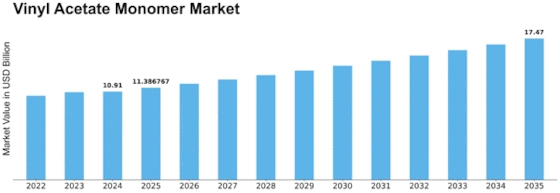

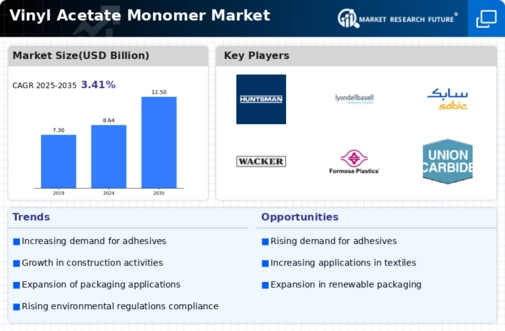

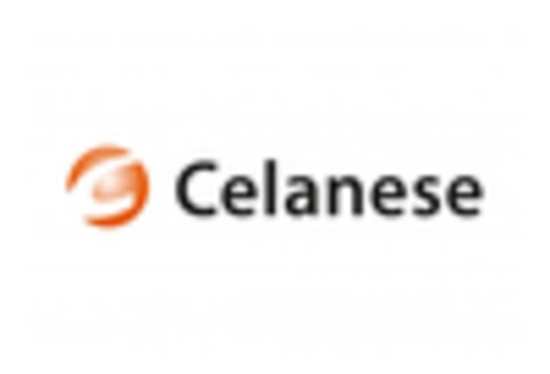
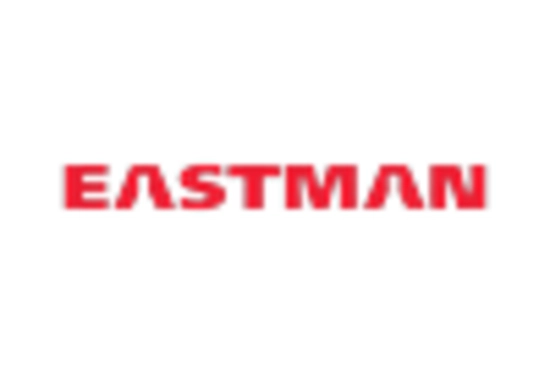
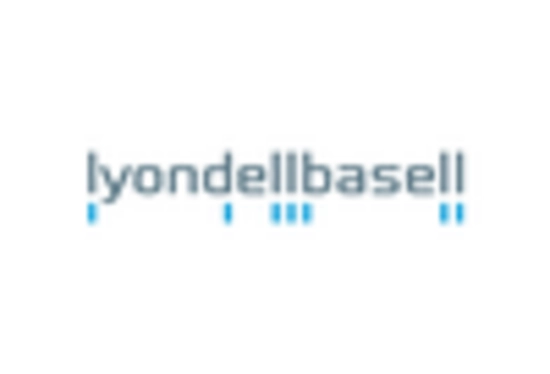
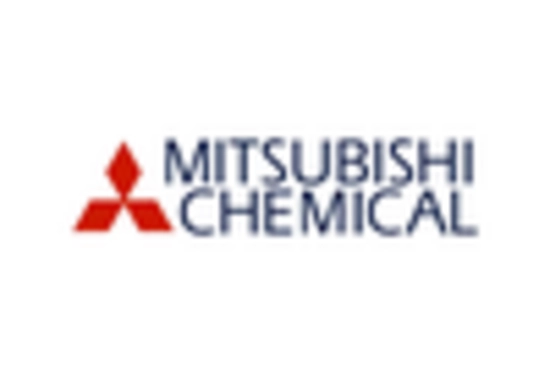
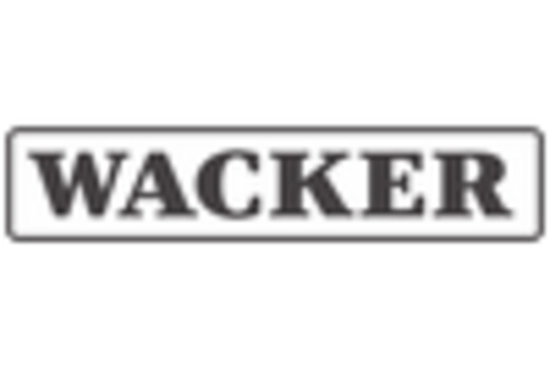

Leave a Comment